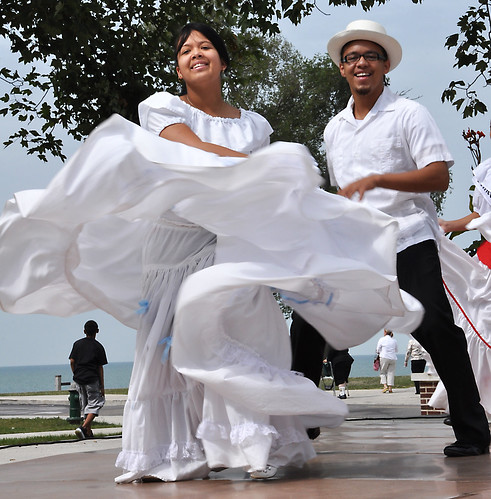 As in most countries, several unique grammar adaptations have appeared over the years in Puerto Rico. While sometimes these usages are grammatically incorrect, they are so widespread that they are accepted as being correct. Below are examples of Puerto Rican Spanish grammar:
As in most countries, several unique grammar adaptations have appeared over the years in Puerto Rico. While sometimes these usages are grammatically incorrect, they are so widespread that they are accepted as being correct. Below are examples of Puerto Rican Spanish grammar:
1. The most common “mistake” in Puerto Rican Spanish is to mix English with Spanish in the same sentence, sometimes known as Spanglish.
Example: Voy a almorzar un sandwich de tuna. The Spanish word for sandwich is emparedado and for tuna is atún.
2. For the 2nd person singular, past tense (preterite) the correct conjugation of a verb is -aste or -iste (ex. hablaste, comiste). You will hear people most of the time add an extra letter S to the end of the conjugated verb.
Example: me llamastes (me llamaste), me dijistes (me dijiste)
3. Again, in the 2nd person singular, past tense (preterite) the verb traer is almost always incorrectly conjugated as traíste even traístes. The correct conjugation is trajiste. The same mistake exists for the 1st person plural trajimos is the correct conjugation instead of the incorrectly used traímos.
4. Several phrases have been directly translated from English into Spanish.
Example: Te llamo para atrás. (I’ll call you back), Te veo (See you).
5. The subject is often placed incorrectly in front of the verb as in phrases like ¿Quién tú eres? and ¿Cómo tú estás? The correct form is ¿Quién eres tú? or ¿Cómo estás tú?
6. The phrase no me di de cuenta is used incorrectly, instead of the correct phrase no me di cuenta de. The preposition de must be after the substantive cuenta.
7. The phrase más ninguno is often incorrectly used to signify nothing else or nothing more. The correct Spanish phrase is ningún otro. Similarly, más nada is incorrect and should be correctly expressed as nada más.
8. The verb haber in the past tense is sometimes mistakenly conjugated in the plural form as habían instead of the correct form había.
Example: Habían tres personas esperando la guagua esta mañana. (Había tres personas esperando la guagua esta mañana.)
9. The phrase el más que sabe is used incorrectly, instead of the correct phrase el que más sabe.
10. The diminutive suffix ITO is sometimes added to words to express small size. It is also used as an expression of esteem or caring for someone. While this is grammatically correct, it has been included to clarify its usages.
Example: Amiguito, ven a verme esta tarde para tomar un café.
11. The phrase más que uno is often incorrectly used to mean only one instead of the correct form solamente uno.
For more information on learning Puerto Rican Spanish and access to over 1500 local slang and phrases, the book Speaking Boricua: A Practical Guide to Puerto Rican Spanish offers an in-depth look at the language.
Check out these other Puerto Rican Spanish Slang Word articles.
Featured photo credit: Raices Latinas Puerto Rican dancers at Latino Fest today in Lorain by ronnie44052 via flickr